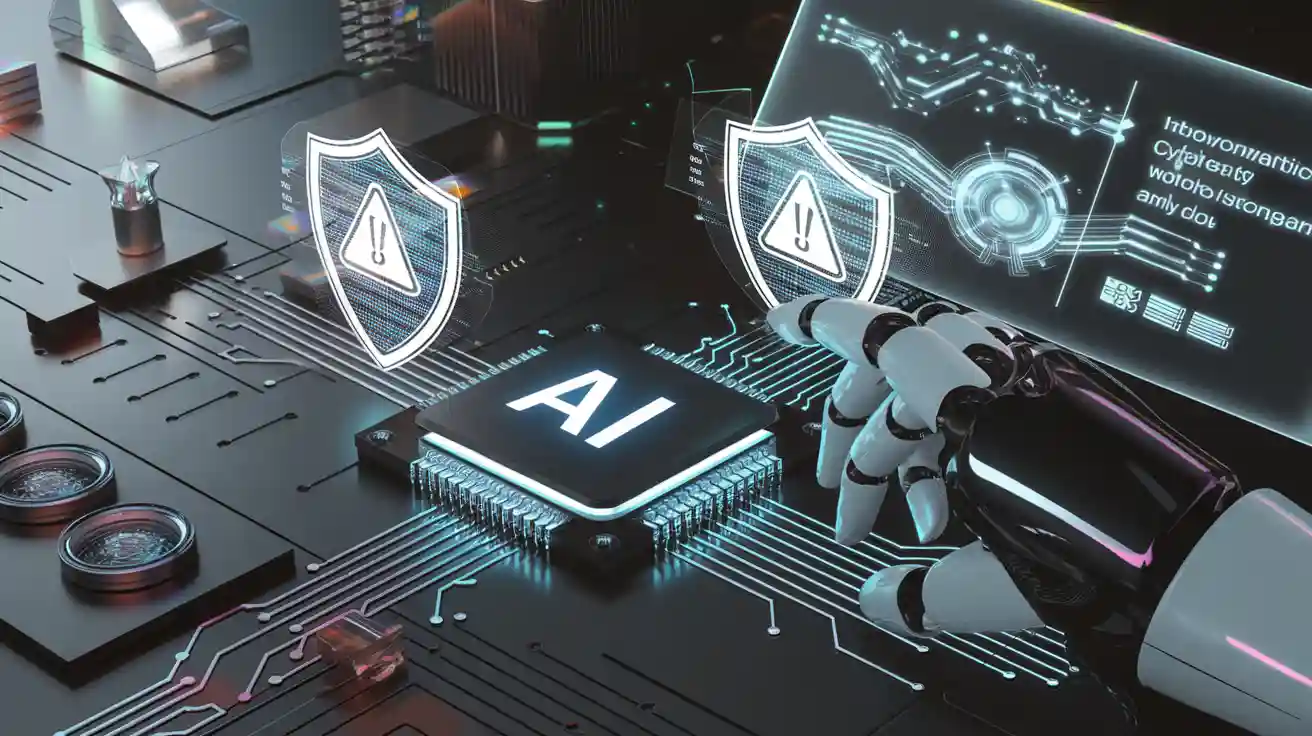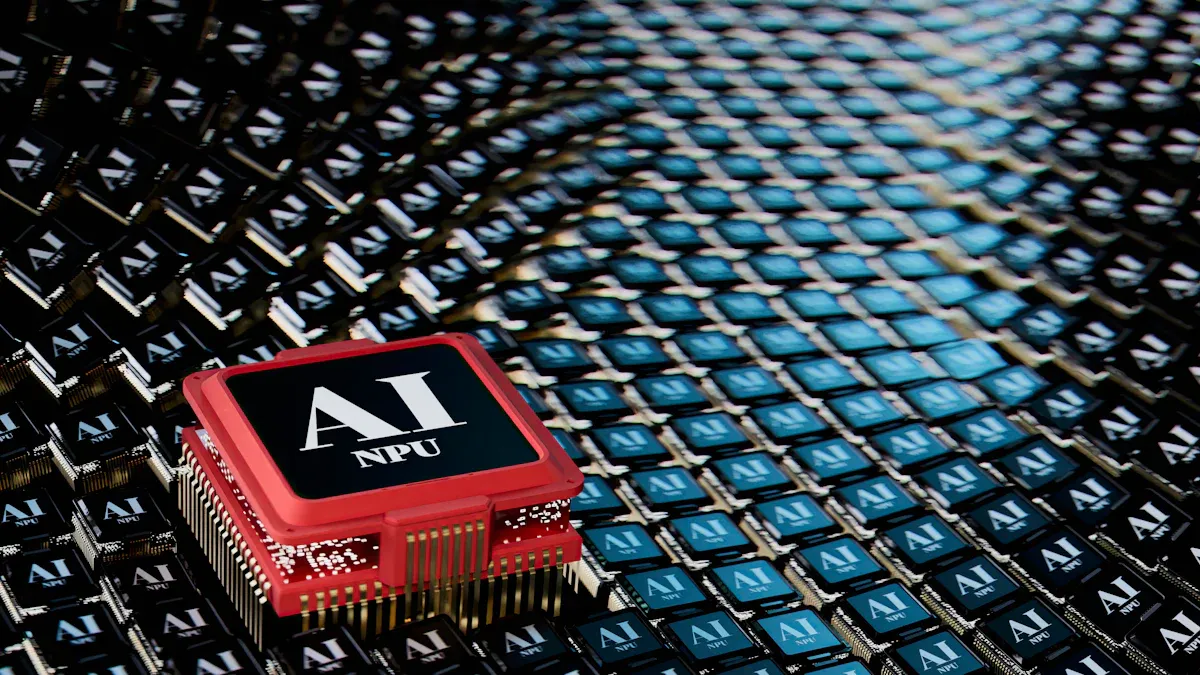
AI red teaming involves testing AI systems to uncover vulnerabilities before malicious actors exploit them. As AI adoption surged by 187% between 2023 and 2025, security spending only grew by 43%, creating a significant gap. This gap, coupled with evolving threats like nation-state cyber espionage, underscores the need for rigorous red teaming to safeguard AI systems.
In 2025, the rise of advanced persistent threats mirrors global conflicts, making enhanced AI security strategies essential.
Organizations are now prioritizing proactive assessments to meet compliance demands and counter these sophisticated attacks effectively.
Key Takeaways
-
AI red teaming tools help find weak spots in AI systems. They mimic attacks to keep systems safe from new dangers.
-
Using tools like Mindgard and HiddenLayer improves how teams handle threats. These tools quickly spot problems and protect companies well.
-
Companies should focus on checking systems early with AI tools. This helps follow rules and fight advanced cyber attacks better.
What Are AI Red Teaming Tools?
Definition and Purpose
AI red teaming tools are specialized solutions designed to test artificial intelligence systems for vulnerabilities. These tools simulate adversarial attacks to identify weaknesses in AI models, ensuring they can withstand real-world threats. Unlike traditional security tools, AI red teaming focuses on the unique challenges posed by machine learning algorithms, such as adversarial examples and biases.
Studies in cybersecurity highlight the scope of these tools:
|
Study |
Contribution |
|---|---|
|
Mirsky et al., 2022 |
|
|
Kong et al., 2021 |
Discusses possible attacks on AI systems. |
|
Szegedy et al., 2013 |
Introduces adversarial examples in AI. |
|
Goodfellow et al., 2014 |
Explores adversarial attacks on neural networks. |
|
Biggio et al., 2014 |
Examines security vulnerabilities in AI. |
|
Caruana et al., 2015 |
Discusses safety concerns associated with AI systems. |
|
Grosse et al., 2023 |
Provides evidence of real-world AI attacks. |
|
Corera, 2023 |
Raises concerns about AI attacks at a government level. |
|
Mislove, 2023 |
Calls for AI red teaming for mission-critical AI systems. |
These tools serve multiple purposes. They help organizations establish metrics to evaluate testing outcomes, develop structured practices to mitigate risks, and ensure continuous monitoring for improvements. For example, metrics provide a quantifiable way to assess the effectiveness of adversarial testing, enabling data-driven decisions.
Why AI Red Teaming Is Critical in 2025
The rapid adoption of AI has introduced new security challenges. In 2025, ransomware payments increased by 500%, with average payouts reaching $2 million per incident. This alarming trend highlights the urgency for frequent security assessments. AI red teaming plays a pivotal role in addressing these vulnerabilities.
Continuous testing of AI systems ensures they remain resilient against evolving threats. Recent incidents, such as concerns over insecure coding practices in AI development, underscore the need for modernized security strategies tailored to autonomous AI. Organizations must prioritize proactive measures to combat risks associated with advanced AI technologies.
The October 2023 Executive Order emphasized the importance of AI red teaming in assessing risks and ensuring safe development. Case studies, such as Hugging Face’s identification of biases in large language models, demonstrate how these practices improve AI systems. By investing in AI red teaming, you can safeguard your systems against adversarial attacks and ensure their reliability in mission-critical scenarios.
Top AI Red Teaming Tools in 2025

Mindgard
Mindgard stands out as one of the most innovative AI-powered security tools in 2025. It specializes in real-time threat detection and response, making it a preferred choice for organizations seeking proactive threat hunting solutions. This tool leverages self-learning AI to adapt to emerging cyber threats, ensuring robust endpoint detection and response capabilities.
Mindgard’s achievements validate its leadership in AI security software. It won the Best Cybersecurity Startup and Best AI Security Solution awards at the 2025 Cybersecurity Excellence Awards. Additionally, it was recognized in OWASP’s Q1 2025 LLM and GenAI Security Solutions Landscape for its dedication to enhancing AI security. Mindgard also secured a spot among the UK's most ground-breaking businesses in the Startups 100 index and raised $8 million to advance its AI-driven insights and real-time threat analysis capabilities.
|
Award Name |
Year |
Description |
|---|---|---|
|
Best Cybersecurity Startup |
2025 |
Recognized for innovative contributions to AI security testing. |
|
Best AI Security Solution |
2025 |
Acknowledged for excellence in providing AI security solutions. |
|
Included in OWASP’s LLM and GenAI Landscape |
2025 |
Highlighted for dedication to enhancing security and safety for AI systems. |
|
Named Among UK's Most Ground-Breaking Businesses |
2025 |
Listed in Startups 100 for being a disruptive new startup in the UK. |
|
$8M Funding Announcement |
2025 |
Significant funding to enhance AI security innovation and leadership in the industry. |
Mindgard’s ability to deliver real-time threat detection and response makes it ideal for organizations facing advanced persistent threats. Its AI-driven insights and endpoint detection capabilities ensure comprehensive protection against cyber threats.
Garak
Garak offers a unique approach to AI red teaming by acting as a scanner or fuzzer. It tests AI models with various inputs to identify vulnerabilities quickly. This tool excels in real-time threat analysis, leveraging a library of known probes that can be extended by its active community. Garak’s functionality mirrors tools like nmap or Metasploit but focuses specifically on large language models (LLMs).
Key features include logging instances where models produce undesirable outputs and enabling proactive threat hunting. The community-driven aspect of Garak ensures continuous improvement, with new probes added regularly to enhance its capabilities.
|
Feature |
Description |
|---|---|
|
Approach |
Acts as a scanner or fuzzer, quickly testing models with various inputs. |
|
Probes |
Comes with a library of known probes that can be extended by the community. |
|
Comparison |
Similar functionality to tools like nmap or Metasploit, but specifically for LLMs. |
|
Logging |
Logs instances where the model produces undesirable outputs. |
|
Community Involvement |
Actively supported by a community that adds new probes to enhance its capabilities. |
Garak’s ability to provide real-time threat detection and logging makes it a powerful tool for organizations seeking to strengthen their AI security software. Its community-driven approach ensures it stays ahead of evolving cyber threats.
PyRIT
PyRIT combines threat intelligence with malware detection to deliver a comprehensive AI security solution. This tool specializes in endpoint detection and response, offering real-time threat analysis to identify and mitigate risks. PyRIT’s self-learning AI adapts to new attack vectors, ensuring continuous protection against advanced threats.
PyRIT’s modular design allows you to customize its features based on your organization’s needs. It integrates seamlessly with existing security frameworks, making it a versatile choice for enterprises and startups alike. Its focus on proactive threat hunting ensures your AI systems remain resilient against cyber threats.
Horizon3
Horizon3 focuses on real-time threat detection and response, leveraging AI-driven insights to identify vulnerabilities in AI systems. This tool excels in endpoint detection and response, providing actionable intelligence to mitigate risks effectively. Horizon3’s advanced analytics capabilities enable real-time threat analysis, ensuring your systems stay secure against evolving cyber threats.
Horizon3’s intuitive interface makes it easy to use, even for teams with limited technical expertise. Its ability to deliver proactive threat hunting solutions ensures comprehensive protection for mission-critical AI systems. Horizon3 is ideal for organizations seeking a balance between usability and advanced security features.
HiddenLayer
HiddenLayer specializes in malware detection and endpoint detection and response, making it a powerful tool for combating cyber threats. This tool uses self-learning AI to adapt to new attack vectors, ensuring real-time threat detection and response capabilities. HiddenLayer’s focus on threat intelligence enables you to stay ahead of emerging risks.
HiddenLayer’s lightweight design ensures it integrates seamlessly with existing security frameworks. Its ability to deliver real-time threat analysis makes it a valuable addition to any organization’s AI security software arsenal. HiddenLayer is particularly effective for industries dealing with sensitive data, such as healthcare and finance.
Comparison Table of Top AI Red Teaming Tools

Key Features Comparison
When evaluating AI red teaming tools, understanding their core features is essential. The table below highlights the primary functionality and standout features of each tool:
|
Tool |
Primary Functionality |
Key Features |
Free Trial |
|---|---|---|---|
|
Mindgard |
Threat detection and response |
Self-learning AI, real-time analysis, endpoint protection |
❌ |
|
Garak |
Adversarial testing for LLMs |
Community-driven probes, logging undesirable outputs, real-time detection |
✅ (14 days) |
|
Threat intelligence and malware detection |
Modular design, automated incident response, endpoint detection |
❌ |
|
|
Horizon3 |
Real-time threat detection and response |
AI-driven insights, intuitive interface, endpoint analysis |
✅ (14 days) |
|
HiddenLayer |
AI/ML system security |
Customizable attack frameworks, real-time reporting, threat intelligence |
❌ |
These tools excel in different areas, from endpoint detection to automated incident response. For example, Mindgard’s self-learning AI adapts to new threats, while Garak’s community-driven approach ensures continuous improvement.
Pricing Comparison
Pricing varies significantly among these tools, depending on their features and target audience. Open-source options like Garak and PyRIT provide cost-effective solutions for smaller teams. In contrast, enterprise-grade tools like Mindgard and HiddenLayer require premium subscriptions. Many tools, such as Horizon3, offer free trials to help you evaluate their capabilities before committing.
|
Tool |
Pricing Model |
Free Trial Availability |
|---|---|---|
|
Mindgard |
Subscription-based |
❌ |
|
Garak |
Open-source |
✅ (14 days) |
|
PyRIT |
Open-source |
❌ |
|
Horizon3 |
Subscription-based |
✅ (14 days) |
|
HiddenLayer |
Subscription-based |
❌ |
Ideal Use Cases for Each Tool
Each tool serves specific organizational needs. Below are examples of how these tools can be applied effectively:
-
Mindgard: Ideal for enterprises facing advanced persistent threats. Its real-time threat detection and response capabilities make it suitable for industries like finance and healthcare.
-
Garak: Best for testing large language models in research or development environments. Its community-driven probes ensure adaptability to evolving threats.
-
PyRIT: Perfect for organizations seeking automated incident response. Its modular design allows customization for diverse security needs.
-
Horizon3: A great choice for teams with limited technical expertise. Its intuitive interface simplifies threat intelligence and endpoint analysis.
-
HiddenLayer: Tailored for industries handling sensitive data. Its focus on AI/ML system security and real-time reporting ensures robust protection.
By aligning your organization’s needs with the strengths of these tools, you can enhance your AI security strategy effectively.
AI red teaming ensures your systems remain secure against evolving threats. Tools like Mindgard and HiddenLayer offer robust endpoint detection and incident response capabilities for enterprises. Garak and PyRIT suit startups needing cost-effective solutions. Investing in real-time analysis and security strengthens your incident response and protects against advanced threats.
FAQ
What is the main purpose of AI red teaming tools?
AI red teaming tools help you identify vulnerabilities in AI systems. They simulate attacks to ensure your AI remains secure against cyber threats and evolving risks.
How do AI-powered security tools differ from traditional security solutions?
AI-powered security tools focus on detecting and responding to threats specific to AI systems. They address challenges like adversarial attacks, biases, and vulnerabilities in machine learning models.
Can AI red teaming tools improve incident response capabilities?
Yes, these tools enhance incident response by providing real-time threat detection and analysis. They help you proactively address risks and strengthen your AI security software.







